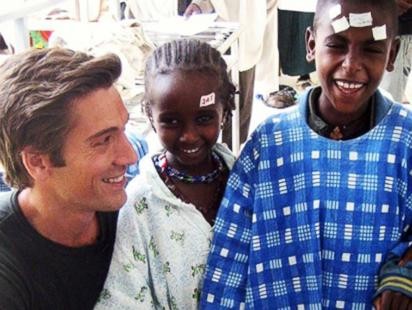Forty million people worldwide live in total darkness and 90 percent of them live in the developing world.
However, three out of four such cases are reversible, according to Dr. Geoffrey Tabin, director of the division of international ophthalmology at the John A. Moran Eye Center.
Tabin spends a large part of the year traveling around the world restoring sight to thousands of people with cataract blindness.
ABC News joined him on a recent trip 8,000 miles from Tabin's home in Park City, Utah, to Ethiopia, which has one of the highest rates of blindness in the world.
| Cataract blindness is an epidemic in Ethiopia, and doctors point to poverty, poor nutrition, genetics and the scorching sun as reasons for the devastating numbers. |
When the ABC News team arrived at the Quiha Zonal Hospital in the remote city of Mekelle, Ethiopia, there were already hundreds of patients waiting for Tabin.
For the patients, the journey to Mekelle was a pilgrimage of sorts.
They came from cities, villages and small farming communities throughout Ethiopia to see Tabin. Getting to the clinic was no small feat considering their condition. Many had traveled for days.
Cataract blindness is an epidemic in Ethiopia, and doctors point to poverty, poor nutrition, genetics and the scorching sun as reasons for the devastating numbers.
Upon their arrival, each patient was screened, prepped by a nurse and marked with a small piece of tape with a number above their eyes. As part of the testing, the nurses held up fingers in front of the patients' eyes -- most of whom stared ahead with blank faces.
Tabin said seeing the line of patients waiting for his help was powerful.
"It's daunting, but also exciting. You know, when I'm operating, every single eye is a life," Tabin said.
Some of the patients were young children, including 8-year-old Mahlik, who had cataracts in both eyes.
"He can't see the blackboard. He can't see to study," Tabin said, "and we'll be able to help him completely."
Tabin travels light. All of his equipment fits in just one yellow duffel bag.
He and his partner, Dr. Sanduk Ruit of Nepal, have perfected this amazing sight-restoring surgery, with the goal of curing preventable blindness around the world.
The two of them have sought out the blind all over the developing world.
They founded the Himalayan Cataract Project and, together with their teams, have performed more than 500,000 surgeries worldwide, restoring sight to children and adults who otherwise would be forced to live in darkness.
A recently released book, "Second Suns: Two Doctors and Their Amazing Quest to Restore Sight and Save Lives," by David Oliver Relin, chronicled the doctors' work in the Himalayas and Sub-Saharan Africa.
The simple surgery takes just seven minutes and costs only $11.
The doctor makes a quick incision, removes the cataract in one piece and puts a new lens in its place.
ABC News followed the doctor and his team for three days. During that time, every single bed in the operating room was occupied and lines stretched around the hospital.
Patients left with bandages over their eyes and returned hopeful the next day.
"These are all patients that were completely blind, where they could not see the shadow of their hand move this close to their face one day ago," Tabin said. "These people haven't been able to see in up to 10 years, and they're going to be seeing again for the first time."
Patients were lined up early around the hospital waiting for the doctor to remove their bandages.
"I love that delayed moment because, when the patch comes off, it takes a couple of seconds to register, and people realize they can see," he said.




No comments:
Post a Comment